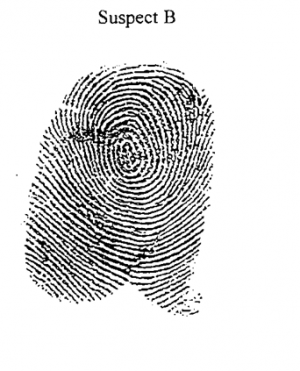Forensic Science Investigation: Difference between revisions
From OER in Education
mNo edit summary |
mNo edit summary |
||
| Line 10: | Line 10: | ||
* introduces the science topic ’acids and bases’ by measuring the pH of soil found on a crime suspect’s shoe. | * introduces the science topic ’acids and bases’ by measuring the pH of soil found on a crime suspect’s shoe. | ||
* introduces the technique of chromatography, by comparing the ink from a pen at the crime scene, with ink owned by a suspect. Chromatography is used in work to distinguish between mixtures and compounds | * introduces the technique of chromatography, by comparing the ink from a pen at the crime scene, with ink owned by a suspect. Chromatography is used in work to distinguish between mixtures and compounds | ||
* introduces human variation by comparing suspect’s | * introduces human variation by comparing a suspect’s thumbprint with that found at the crime scene. Fingerprinting has often been used as a starter activity for discussing what we inherit from our parents. | ||
* also introduces the topic ’acids and bases’ in an activity where pupils measure the acidity of household liquids. | * also introduces the topic ’acids and bases’ in an activity where pupils measure the acidity of household liquids and classify them as one or the other. | ||
|strategy= | |strategy= | ||
|image=Forensic1.png | |image=Forensic1.png | ||
| Line 17: | Line 17: | ||
* to introduce the idea of acids and bases | * to introduce the idea of acids and bases | ||
* to use evidence to support conclusions | * to use evidence to support conclusions | ||
* | * probably also to introduce young students to working in a lab with a 'real' purpose | ||
|additional resources= | |additional resources= | ||
|useful information= | |useful information= | ||
Revision as of 17:10, 24 September 2012
A who-dunnit circus of activities
Lesson idea. These five activities have often been used as a circus of activity on a school open-day for young students. The teacher has given these lab activities an investigative slant in a ‘real world’ context. The work
- introduces the science topic ’acids and bases’ by measuring the pH of soil found on a crime suspect’s shoe.
- introduces the technique of chromatography, by comparing the ink from a pen at the crime scene, with ink owned by a suspect. Chromatography is used in work to distinguish between mixtures and compounds
- introduces human variation by comparing a suspect’s thumbprint with that found at the crime scene. Fingerprinting has often been used as a starter activity for discussing what we inherit from our parents.
- also introduces the topic ’acids and bases’ in an activity where pupils measure the acidity of household liquids and classify them as one or the other.
Teaching approach. This lesson introduces inquiry(ta)-based learning through the topic of forensic science. It engages pupils in higher order(ta) reasoning(ta) solving a variety of forensic problems. (edit)
| Resource details | |
| Title | Forensic Science Investigation |
| Topic | |
| Teaching approach | |
| Learning Objectives |
|
| Format / structure | |
| Subject | |
| Age of students / grade | |
| Table of contents | |
| Additional Resources/material needed | |
| Useful information | |
| Related ORBIT Wiki Resources | |
| Other (e.g. time frame) | |
| Files and resources to view and download | Download the document here File:Forensic Science Investigation - SC0004.doc |
| Acknowledgement | |
| License | |

